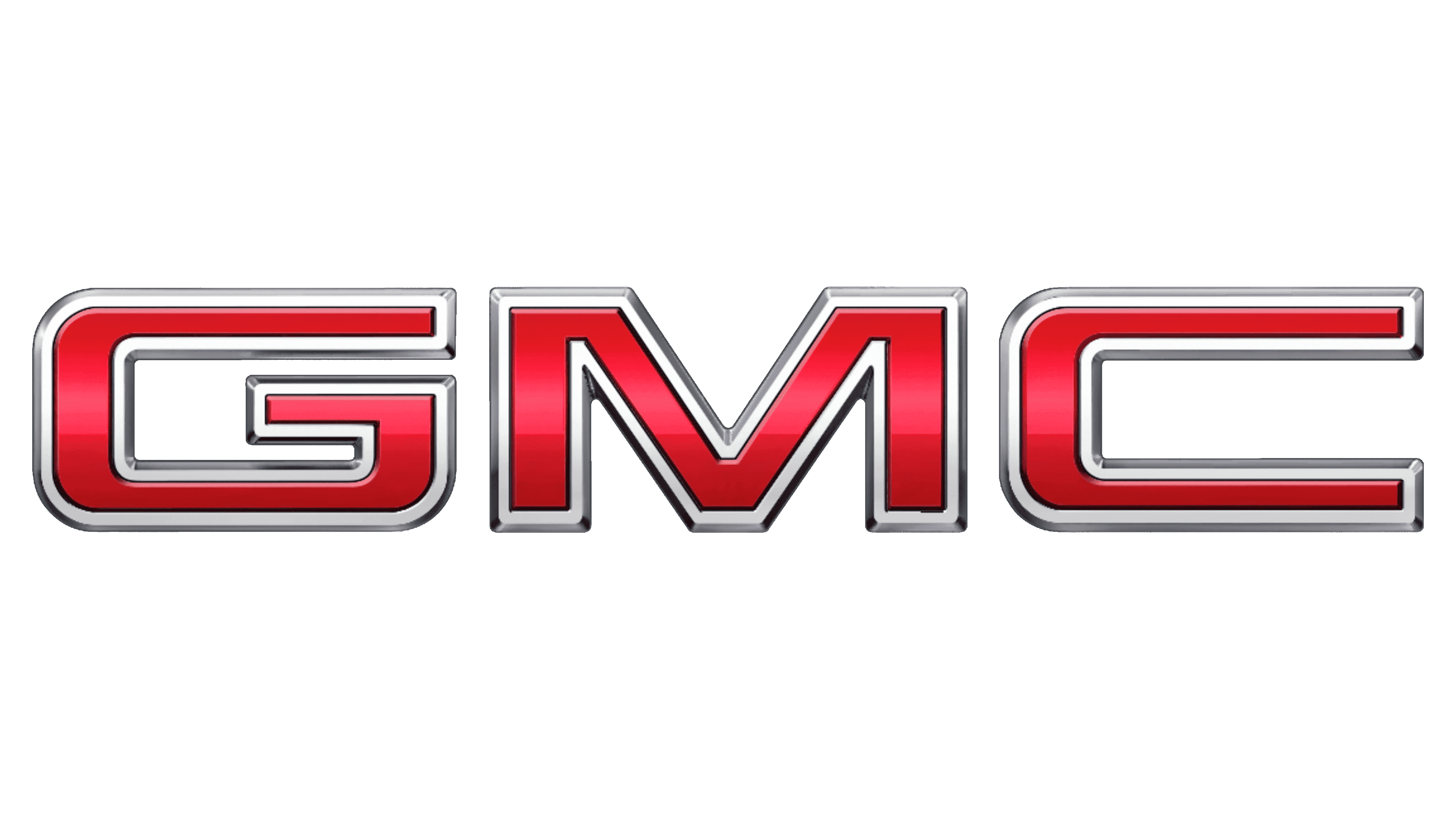«Rapid Motor Vehicle Company» was founded in the year 1901 by Polish American Max Grabowski in Pontiac, Michigan, and specialized in the production of middle-class trucks. Later, in the year 1908, the company became part of the General Motors concern. In the same year GM bought one more small company called «Reliance Motor Car Company», and in the year 1911 both companies were merged under the name «GMC Truck», and that is how the famous brand GMC was born.
Meaning and History
Although the logo of the brand is quite simple and consists of a tree the capital G, M, and C letters forming the company’s name, it is one of the most recognizable in North America. Companies trucks are known for their reliability and the GMC logo was designed to match it. Large red letters, decorated with silver borders, symbolize raw power and brutal utility – the things that represent the values of the company. However, the logo of GMA did not always look like we know it today. During its history, the company changed its logo three times.
1911 – 1947
The original logo of the brand was created in the year 1911. It represented an orange circle with a black center. On the orange part with black printed letters was engraved the full name of the company: “General Motors Trucks”, while in the center was situated the short abbreviation GMC. These three letters are written in the capital form with white color and decorated with orange borders.
1947 – 1960
However, the first emblem did not last for long. Manufactures found it too complicated and in the year 1947 replaced with a simpler one, which contained a white GMC Truck sign on blue background. The white color symbolized the purity and charm of the brand, while the blue color was chosen to portray the performance and solidity of the company. The idea and the colors for this emblem were taken from the head company – General Motors. What is more, under the emblem was a short inscription “GMC and Chevrolet Truck Pictures”. The reason for that was the similarity between the two brands. However, as the brands developed, this legend was omitted.
1960 – 1967
The GMC logo consisted of a black text box on which the gray letters “GMC” were depicted with a metallic effect.
1975 – 1979
The logo was a red square in a double frame. The frame was black and white. The capital letters “GMC” in white were inside the square.
1979 – 2014
The logo consisted of capital letters “GMC”. The letters were red in a gray-black frame with a 3D effect. The gray frame that was on top was supposed to create a metal effect.
2014 – present
The logo still consisted of capital letters. Letters were framed. Only the red color became more saturated, a gradient was added to it. The framing created a metal effect.
The logo of GMC, as we know it today appeared in 1960. Massive dark-red letters on the grills immediately caught the eye and symbolize the harsh nature of the car. Over time, the color of the letters become less burgundy and redder and a silver bezel appeared, but it didn’t change its essence. The Legends
The brand gained quite a lot of popularity thanks to the GMC Vandura model, which was firstly produced in the year 1970. It was loved by the owners for its speciousness and reliability. Vandura also became popular in American TV series. For example, it could be in “Team A”. Later, in the year 1996, GMC used the concept of Vandura to create the new model – GMC Savana, which become one of the most popular-selling minivans in the United States. By the way, Savana could also be seen in American movies like Six Feet Under, The Walking Dead, or The Shield. Also, the American brand and the gaming industry did not pass by. In Driver San Francisco, you can see both of these models.
The Concept Cars
In an attempt to combine a passenger car and a pickup in one car, GMC has created a concept car with an unusual shape – GMC Centaur. This car was presented to the visitors at the NAIAS motor show in the year 1988. The unusual name for the concept car was chosen by its creators, who were inspired by creatures from ancient Greek mythology with the head and torso of a man on the body of a horse. Thus, they wanted to emphasize the duality of the vehicle’s personality.
In the front of the concept’s body, which reminiscent of a minivan, located a pair of bucket seats in the first row and a comfortable sofa that could easily accommodate three adult passengers in the second.








